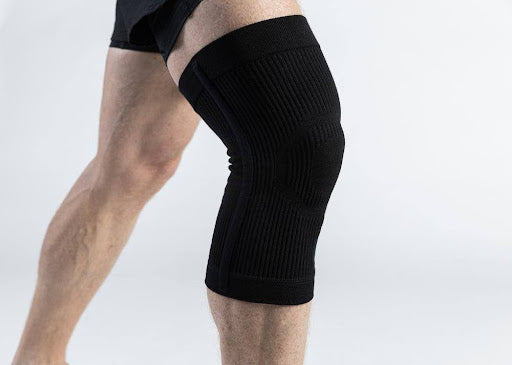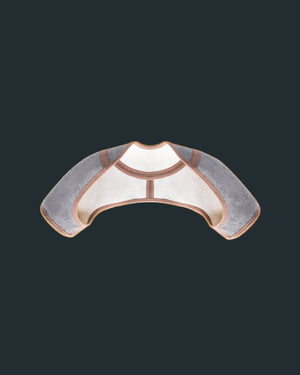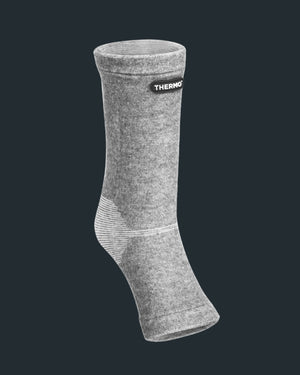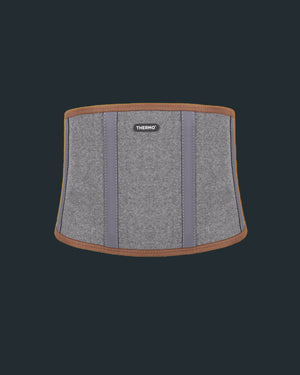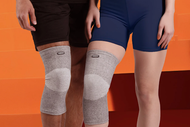Non-compression and compression sleeves can sometimes be difficult to discern from each other and therefore easily mistaken. Even though both types of sleeves are used to wrap a joint in our bodies, i...
Non-compression and compression sleeves can sometimes be difficult to discern from each other and therefore easily mistaken. Even though both types of sleeves are used to wrap a joint in our bodies, it is important to clarify each provides unique benefits to us.
This guide breaks down the main differences between the two, as well as the uses that each provides. It also showcases why non-compression recovery sleeves can be a good choice in most cases and highlights the specific injuries that can be mediated through this type of sleeve.
For more information about how recovery wear can help you, visit our blog.
But first, let’s discuss why athletes, and people recovering from injury, use these recovery sleeves.
Let’s dive in!
Why Do Athletes Wear Recovery Sleeves?
Athletes wear recovery sleeves for their various benefits. Here’s an inside look:
Enhanced Performance: Most professional sleeves enhance the blood flow to the joint they brace. Enhanced blood flow improves performance by delivering more oxygen and nutrients to working muscle tissue. This continuous support reduces fatigue during exercise and soreness post-exercise.
What Is the Difference Between Compression and Non-compression Sleeves?
The primary difference between both sleeve types is how hard the strength of their compression is. Compression sleeves apply more pressure on the affected joint.
It’s important to note that a standard non-compression garment isn’t the same as a non-compression recovery garment.
The latter is a medical-grade non-compression sleeve, which, despite providing less pressure than compression sleeves, still has more compression than standard non-compression ones. This allows non-compression recovery sleeves to have the best of both worlds.
Why It’s Better to Wear Non-compression Recovery Sleeves
1. Better Skin Protection
Both compression and non-compression sleeves can protect against cuts when worn, but non-compression recovery ones offer an extra advantage here: breathability. This is especially helpful when there’s already a cut on a joint’s skin that you wear your sleeve on.
Cuts and bruises on our joints are more annoying since these are high-friction areas and movement can cause the cut to re-open.
Healing is optimized when the injured site is left undisturbed, and the constant movement of joints may cause the healing tissue on the wound to continue to be disturbed.
Non-compression recovery sleeves provide a smooth fit over the wound site, making it easier for the wound to remain undisturbed even under constant motion.
2. More Comfort
Non-compression recovery sleeves are usually made from medical, more premium materials. The better material selection allows these sleeves to be worn for extended periods without the irritation that may arise from compression sleeves.
Take the Thermo Lite Recovery Wear, for example. The special bamboo charcoal fabric used in their construction allows for superior breathability, allowing them to be worn comfortably even during sleep.
3. Better Fit
Compression sleeves are critical when it comes to size. A size that’s too large can quickly become loose, and a “too tight” compression sleeve can do more harm than good.
A 2016 study found that extra tightness caused by compression socks can cause peroneal nerve palsy, a condition where you feel some sensory loss under your knees down to your foot.
Non-compression recovery sleeves don’t have the risks associated with compression stockings. Even if your selected size doesn’t fit you perfectly, it’ll still provide most of the benefits without the associated risks of extra compression.
4. Other Individual Advantages
Some brands offer additional advantages to the already helpful recovery sleeves because of the fabrics used. For example, bamboo charcoal is a unique material used in the fabrication of Thermo Lite products.
According to a 2009 study, bamboo charcoal can inhibit bacterial metabolism, which results in fewer allergic skin reactions. Bamboo charcoal can also reduce static buildup because it’s a conductive material.
Further, compared to regular fabrics, the moisture-wicking and deodorizing ability of bamboo charcoal is superior, which is helpful for light activities.
Injuries Mediated With Non-Compression Sleeves
Sleeves, whether compressive or not, don’t fully eliminate all injuries. They may protect you against cuts or bruises and reduce the risk of injury, but they don’t prevent muscle strains or tears resulting from exercise faults, trauma, or overuse.

However, non-compression recovery sleeves can improve the healing of the affected joints through:
-
The improved blood supply is achieved through negative ions released by the fabric’s semiconductors.
-
The infrared emission they produce when they’re affected by your body heat.
-
The superior pain control, which reduces chronic pain by up to 62%.
That being said, non-compression recovery sleeves can improve recovery from:
-
Sore foot arches
-
Peripheral Neuropathy
-
Plantar fasciitis
-
Muscle tendonitis and tendinopathy
-
Joint Osteoarthritis
-
Flat feet
-
Bone spurs
-
Arch stiffness
-
Diabetic-induced pain
-
Gout
FAQs
Here are some of the frequently asked questions.
Are Compression Sleeves Obsolete?
No, compression sleeves aren’t obsolete, and they still have great sales all over the world. However, non-compression recovery sleeves provide most of the benefits of such sleeves with little to none of their drawbacks, making them a better choice in many cases.
Do Non-compression Sleeves Make You Perform Better?
No, non-compression recovery sleeves don’t enhance your athletic performance. However, they can be worn during a light workout to provide better blood supply and moisture-wicking.
Enhanced Performance: Most professional sleeves enhance the blood flow to the joint they brace. Enhanced blood flow improves performance by delivering more oxygen and nutrients to working muscle tissue. This continuous support reduces fatigue during exercise and soreness post-exercise.
Can Non-Compression Sleeves Be Worn 24/7?
Not all non-compression sleeves can be worn 24/7. However, medical-grade non-compression sleeves are made from materials soft enough to be worn around the clock. They should be taken off during the shower, though.
Final Words
Non-compression and compression sleeves are different. Compression sleeves have their benefits, but they are slowly becoming surpassed by non-compressive recovery wear.
The range of non-compressive garments also extends beyond arm sleeves and braces. This type of recovery wear can now help heal a wider range of muscles, including the shoulder and back muscles.
Improve your recovery journey through the natural approach utilized by Thermo Recovery Wear.
Browse our shop to see our range, and check our FAQs section if you have any questions.
Resources
-
Effects of a Compression Garment on Sensory Feedback Transmission in the Human Upper Limb | National Library of Medicine
- Control of Cardiac Output: Venous Return | National Library of Medicine
- Peroneal Nerve Palsy After Compression Stockings Application | National Library of Medicine
- Preparation and Antibacterial Efficacy of Bamboo Charcoal/Polyoxometalate Biological Protective Material | National Library of Medicine
